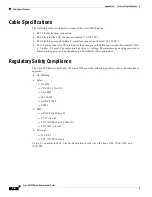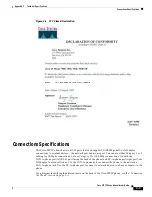
Glossary
GL-3
Cisco SIP IP Phone Administrator Guide
M
MF
Multifrequency tones are made of six frequencies that provide 15 two frequency combinations for
indication digits 0-9 and KP/ST signals.
multicast
A process of transmitting protocol data units (PDUs) from one source to many destinations. The actual
mechanism (that is, IP multicast, multi-unicast, and so forth) for this process might be different for
LAN technologies.
multipoint-unicast
A process of transferring PDUs where an endpoint sends more than one copy of a media stream to
different endpoints. This can be necessary in networks that do not support multicast.
N
node
A H.323 entity that uses RAS to communicate with the gatekeeper; for example, an endpoint such as a
terminal, proxy, or gateway.
P
PDU
Protocol data units used by bridges to transfer connectivity information.
POTS
Plain old telephone service. Basic telephone service supplying standard single line telephones,
telephone lines, and access to the PSTN.
proxy server
An intermediary program that acts as both a server and a client for the purpose of making requests on
behalf of other clients. Requests are serviced internally or by passing them on, possibly after
translation, to other servers. A proxy interprets, and, if necessary, rewrites a request message before
forwarding it.
PSTN
Public switched telephone network. PSTN refers to the local telephone company.
R
redirect server
A redirect server is a server that accepts a SIP request, maps the address into zero or more new
addresses and returns these addresses to the client. It does not initiate its own SIP request nor accept
calls.
registrar
A registrar is a server that accepts REGISTER requests. A registrar is typically colocated with a proxy
or redirect server and may offer location services.
RAS
Registration, admission, and status protocol. This is the protocol that is used between endpoints and
the gatekeeper to perform management functions.
RBS
Robbed-bit signaling.












































